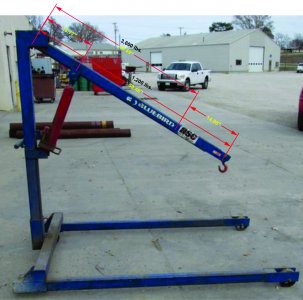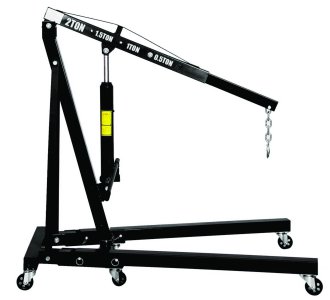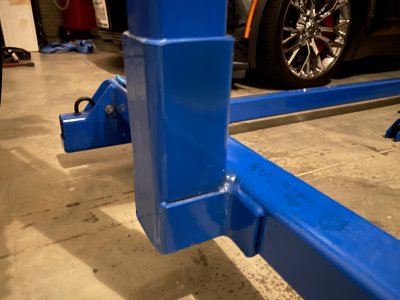- Joined
- Oct 7, 2020
- Messages
- 2,470
This morning I finished the welding.
The long legs were clamped with a long pipe clamp and tacked.
View attachment 113271
A slightly different set-up to clamp the short pieces. I used one of the wood wedges I made to cut them to give flat purchase for the clamp.
View attachment 113272
After tacking, I MIG welded everything. The welds came out ok for me.
I'm pretty happy with the fillet weld on the right. They aren't my forte.
View attachment 113273 View attachment 113274
As an experiment, I tried out the non-automatic helmet. I was supposed to be able to see better with.
As you can see, I couldn't see anything and totally missed the joint and had to make another pass.
I cleverly did this on the bottom where it won't be seen.
View attachment 113275
I installed the legs to see if they work. It seems to be okie dokie. Nothing left to do but paint them.
View attachment 113276
Here it is with the legs in the stowed position.
Oops. The bad weld is showing. Looks like I'll have to grind some before painting.
View attachment 113277
Phase one of the hoist mod is done but for the painting.
Phase two will be a knob for the jack screw. To be continued...
Good looking modification Franko! So after 5 years how's it holding up? I see there has been some concern about sturdiness. I wonder if adding another set of casters on the legs just in front of the pipes/extensions would add to the strength.





